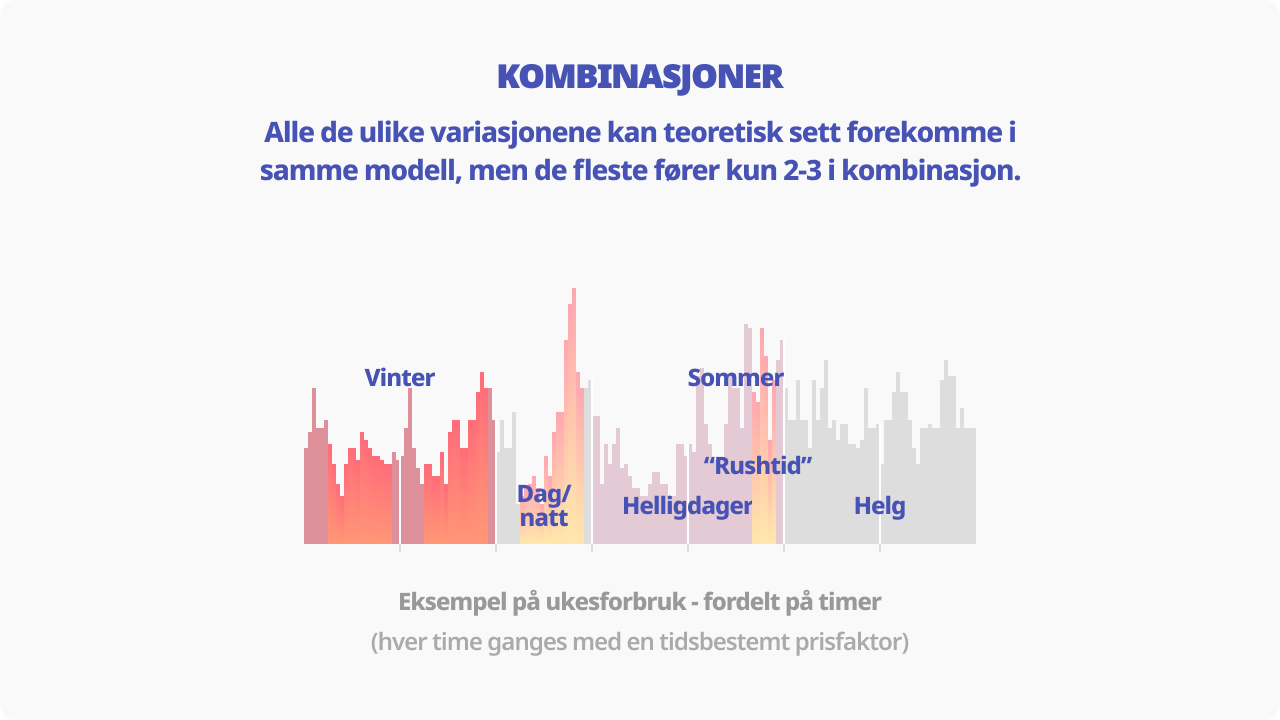Structure
Division into steps and Structural Dynamics
Dividing the monthly capacity charge into multiple capacity steps can be complicated for consumers to understand. However, it is considered an effective way to ensure basic revenue and, at the same time, provide fair billing through a variable component - thus influencing consumer behavior and incentivizing energy saving.
The most common division has been with a fixed charge to ensure steady operations and an energy charge that depends on the actual amount of consumption. Most DSO costs can be considered fixed, but they are also linked to consumption patterns, especially peak demand with simultaneous consumption. Therefore, the core idea of the grid tariff has shifted the fixed charge towards greater differentiation based on the actual cost in the power grid, especially peak demand with simultaneous consumption, which the regulations refer to as the consumer's demand for capacity.
The DSOs has the following expenses:
- Operation of existing grid (maintenance, renewal, monitoring/emergency preparedness)
- Planning and development of new grid
- Grid loss (about 10% of purchased energy is lost during transport and must be replaced by buying more energy from producers)
- Connection of new facilities/buildings to the grid
- Indirect/forward billing:
- Rental of the transmission grid (to Statnett)
- Public fees (to the Norwegian government and Enova)
Especially the expansion of the grid is directly related to customer demand patterns as it needs to be dimensioned according to peak demand (including a significant buffer and room for estimated growth). Energy loss along power lines is most often associated with total energy consumption and, therefore, naturally affects end-user costs the most through the energy charge. However, energy loss also increases proportionally with power peaks in the grid, and thus a capacity charge or demand charge may provide a fairer distribution than a flat energy charge would do alone.
Fixed Charge (Capacity Charge)
As of July 1st, 2022, the fixed charge shall be differentiated according to the customer's demand for capacity. Therefore, it is often called the demand charge or capacity charge.
Since the legal text does not specify how the charge should be designed, there are several variants implemented by different grid companies. Nevertheless, most have adopted a stepwise model, even though the rates differ from company to company. Below, we describe all the known models, starting with the most common one:
1. Stepwise model based on the average of peak hours (from unique days)
This variant is based on measurements of hourly consumption, which represents the total energy consumption during that hour (also a measure of the average power in the same hour). The three highest individual hours from different days then form an average - which is used in the stepwise model with monthly amounts.
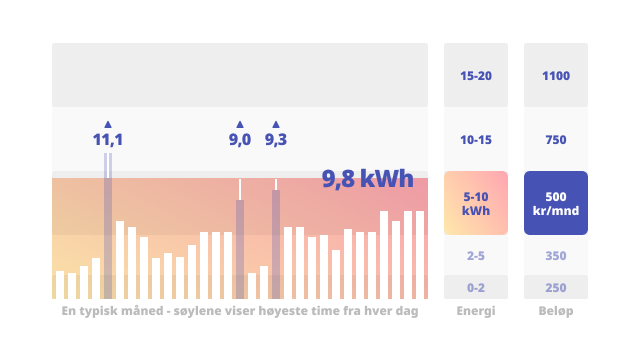
The amounts corresponding to capacity steps are usually progressively higher as energy consumption exceeds values for a normal household. However, the rates level off somewhat at very high steps. The model below was taken from Telemark Nett on February 2, 2023, and is an example of a typical stepwise model:
| Capacity steps (kWh) | Monthly fee (NOK) |
|---|---|
| 0-5 | 350 |
| 5-10 | 450 |
| 10-15 | 875 |
| 15-20 | 1125 |
| 20-25 | 1375 |
| 25-50 | 2625 |
| 50-75 | 3750 |
| 75+ | 5250 |
2. Peaks from unique weeks in the preceding 52 weeks, weighted throughout the year
One of the more alternative models in use. It finds the highest hourly measurements after weighting that applies to each month (stronger weighting in the winter months). It then takes the average of the five highest adjusted hourly measurements from the previous year, with the five coming from different weeks. The calculated average corresponds to a tier in a cost ladder resembling a regular stepwise model, but with a new tier for each integer.
In addition, there is an annual fixed base cost, which is divided by twelve months and added to the capacity calculation for a given month.
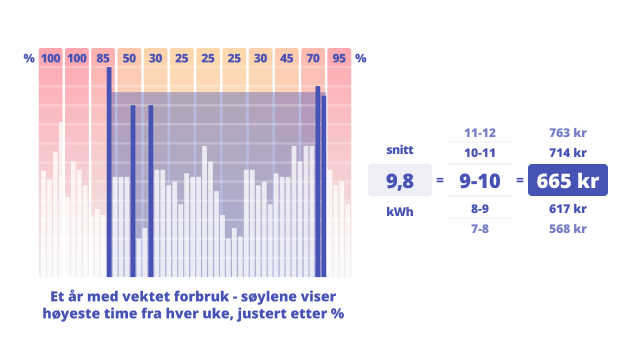
3. Linear pricing of peak hour averages
This model is largely similar to model 1 described above, but without the stepwise amount calculation. Instead, the consumption average of selected peak hours is multiplied by a standard linear rate per kWh.

4. Fuse-based pricing
This model differs the most from the others, as actual consumption is not used as the basis for the capacity charge. In these cases, the DSO interprets the requirement for differentiation based on the customer's demand for capacity as a somewhat more static and hypothetical measure of how much capacity the customer can use at most - in other words, what the main fuse allows for consumption. The calculation determines the size of the main fuse based on current capacity (amperes), or sometimes both current capacity (amperes) and voltage level (volts, typically 230V or 400V).
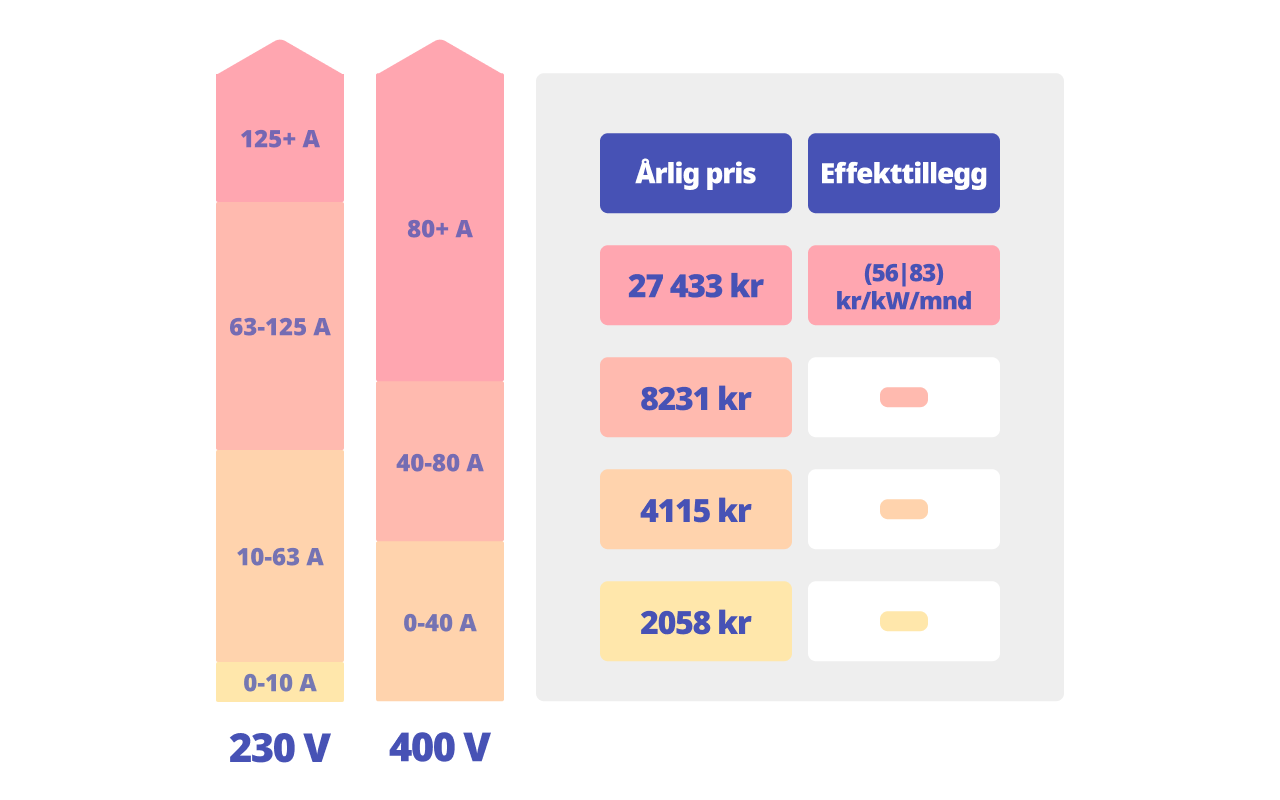
Example model from SuNett, with price differentiation based on both voltage and amperage.
Energy Charge
The idea behind the energy charge is mainly to cover the difference for heat loss during transport along the grid, which can be around 10% of the transported energy under normal conditions. It is settled per hourly consumption but can vary in rate by season, time of day, or special days. Some apply a flat rate, but most consider a few of the example rates below in their models. Some DSOs also allow customers to choose the type of energy charge themselves.
The regulation now includes that the energy charge can account for a maximum of 50% of the final invoice to the electricity customer, but DSOs can wait until July 1st, 2024, to introduce this limit.
Constant Rate
The simplest variant, where the same rate is applied to all hours throughout the year.
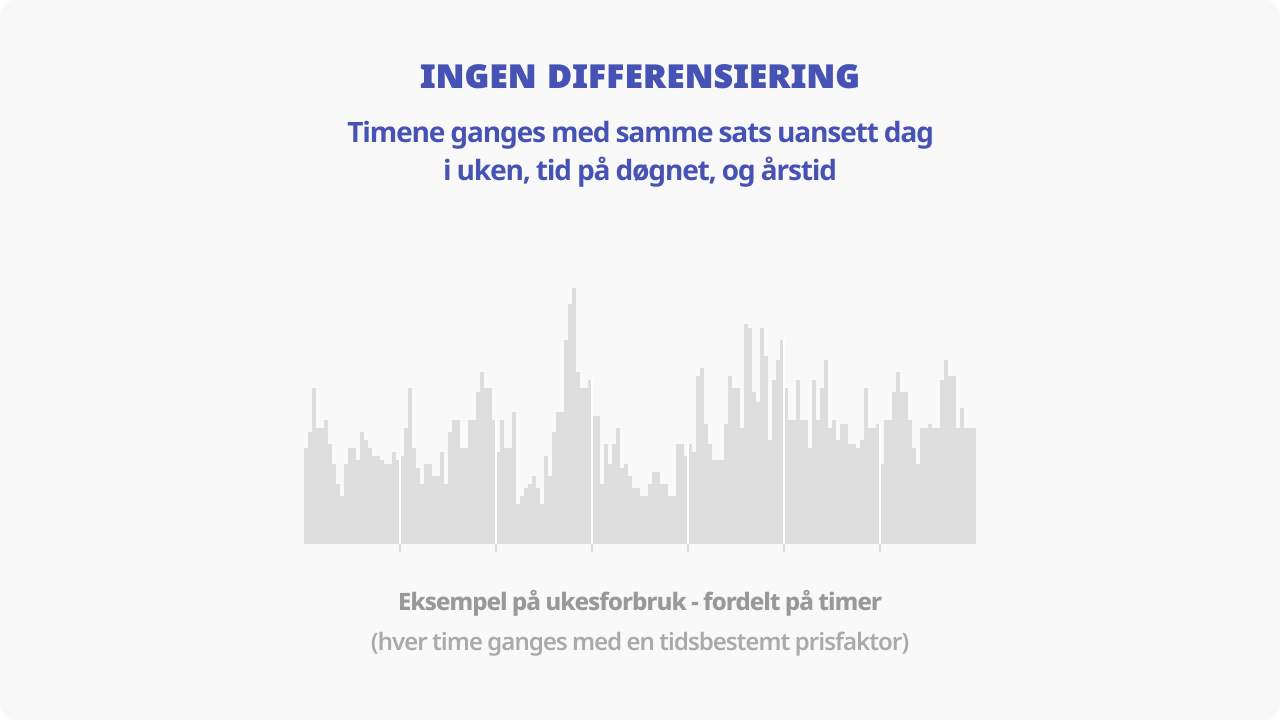
Usage Time Surcharge
Some DSOs apply a form of "rush hour fee" on Friday evenings (usually from 4 pm to 10 pm) during the winter season. It is added to a base rate that applies during the rest of the week.
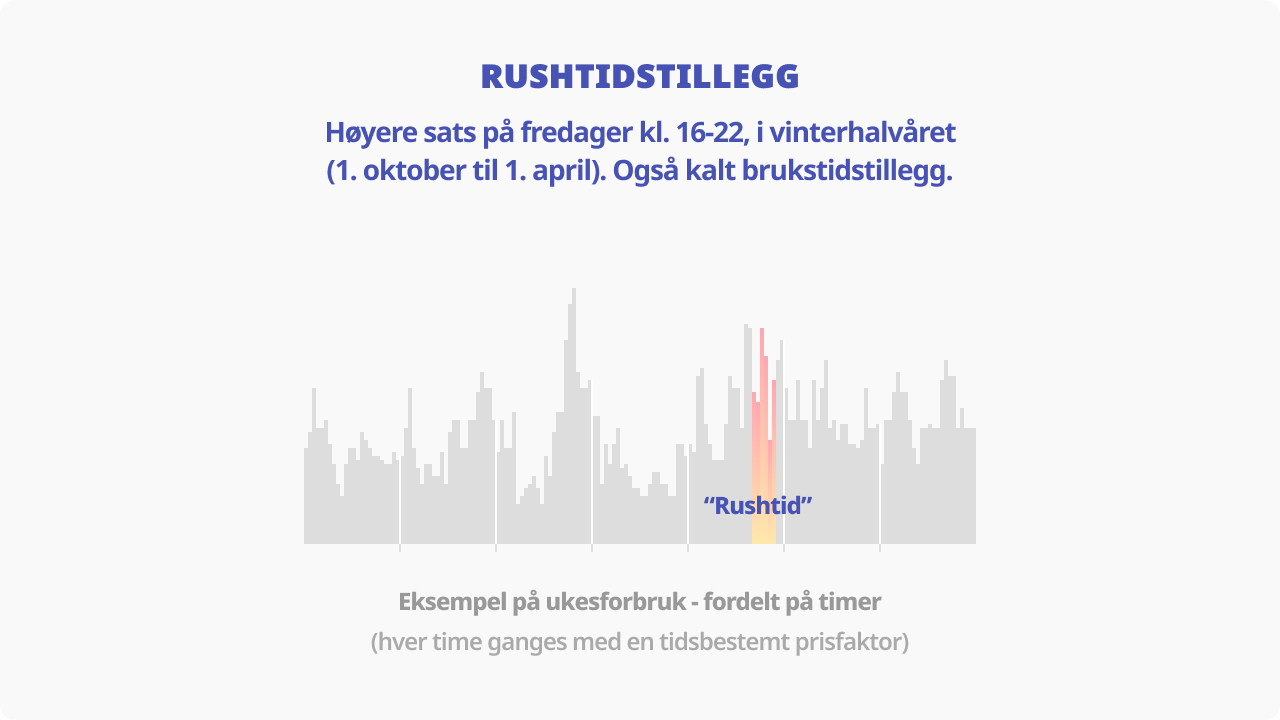
Different Rates for Day and Night
One of the most common variations differentiates between consumption during the day and night, where night is usually defined as the period between 10:00 pm and 6:00 am the following day. The daytime rate is always slightly higher to encourage more even consumption throughout the day and shifting flexible consumption to quiet nighttime hours.
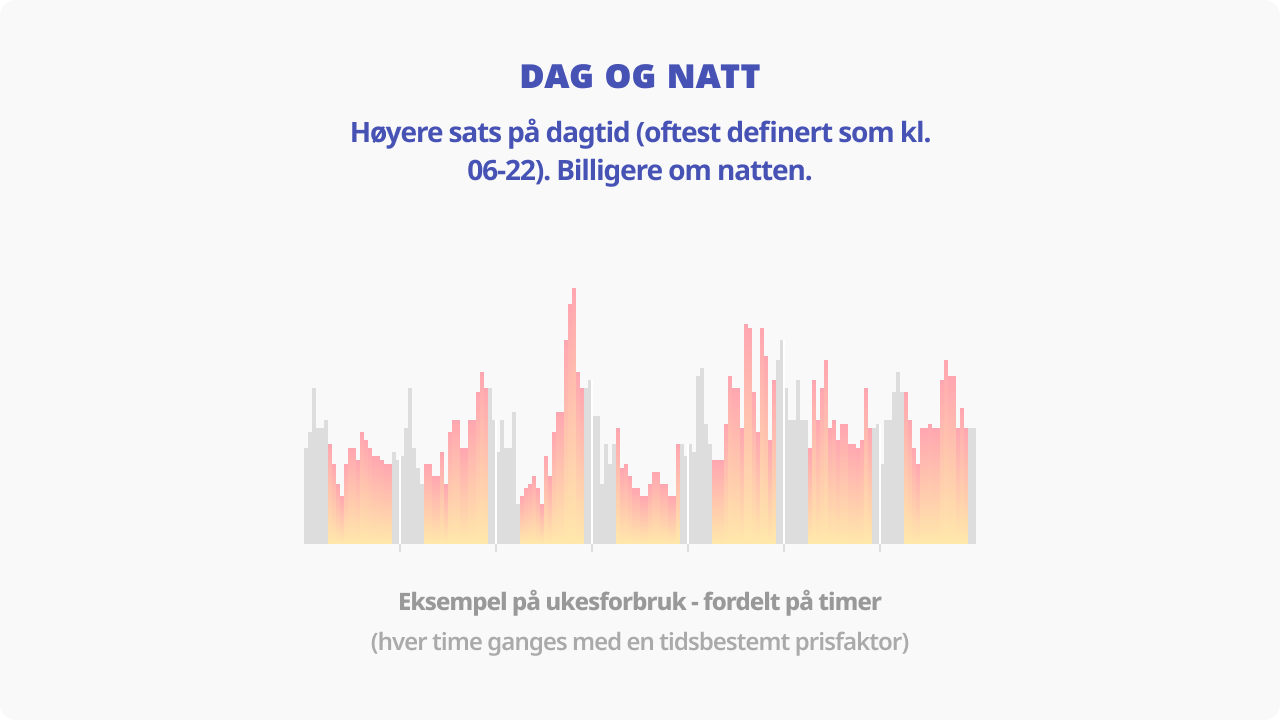
Different Rates for Day, Night, and Weekend
Also, a fairly common variant that differentiates between daytime and nighttime rates but also has a lower rate on the weekends (Saturday and Sunday). Often, the weekend rate is the same as the nighttime rate, but not necessarily.
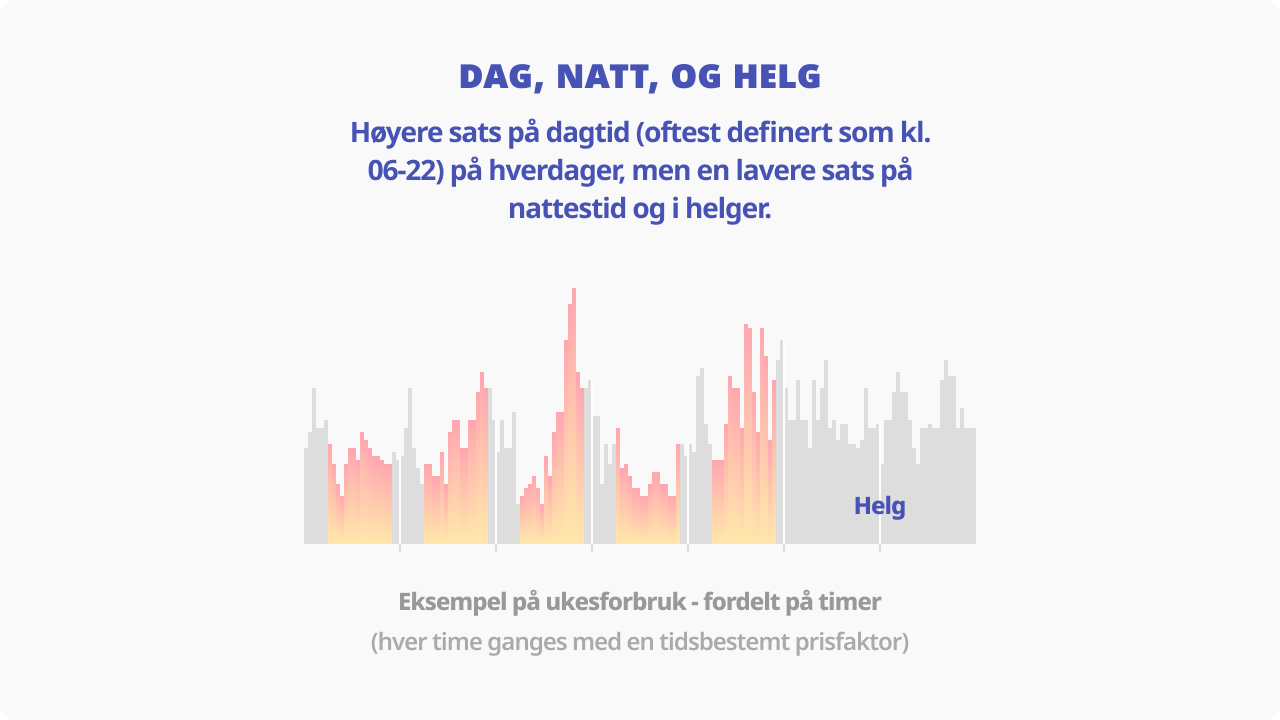
Seasonal Variations
Another quite common variation distinguishes between energy charges in the winter and summer seasons. Currently, only these two seasons are implemented among grid companies, but this may change to include other seasons or unique definitions of seasons. Furthermore, there is no standard definition of which months constitute winter and summer, so this may vary between different models.
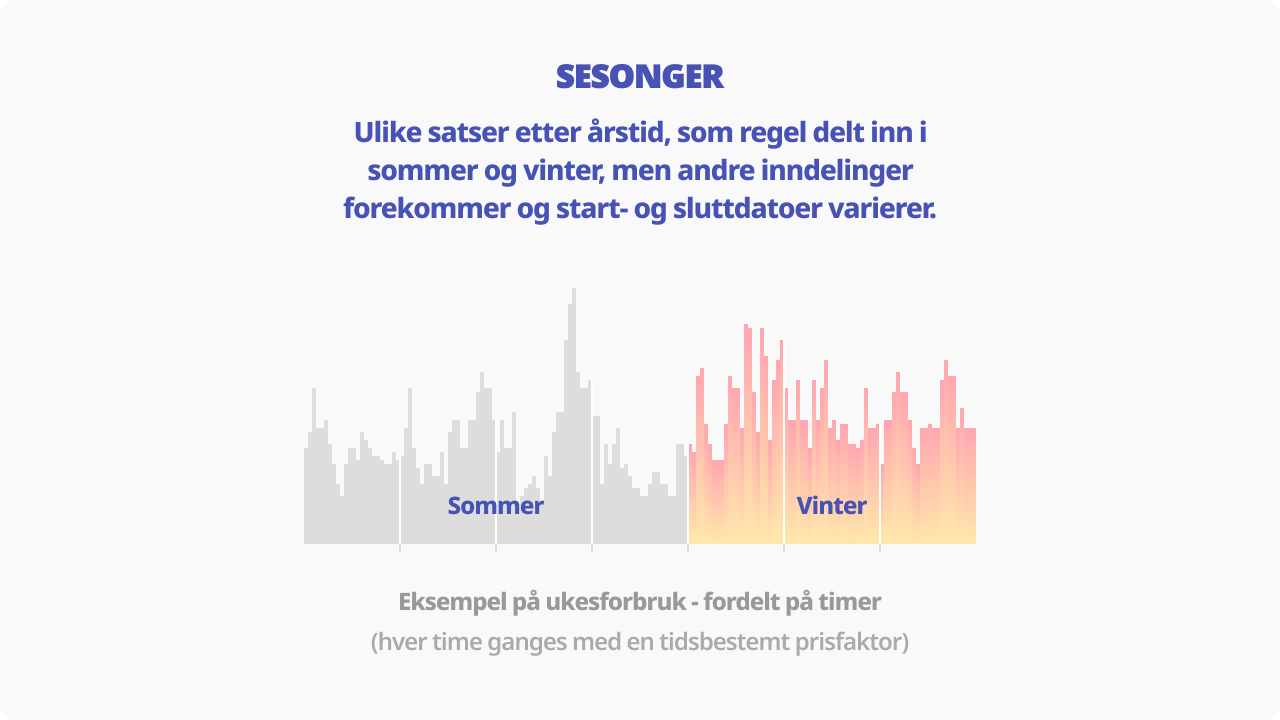
Complex Combinations
In the interaction between the various models, it can quickly become quite intricate, so the most common approach is for grid companies to keep the energy charge as simple as possible, without compromising the desired behavioral influence.
